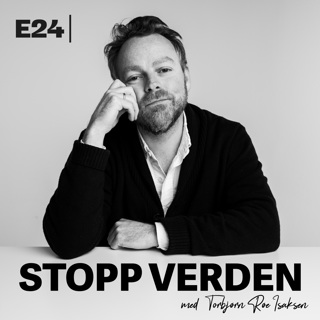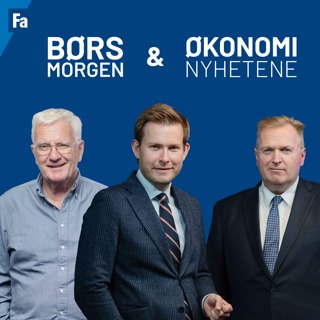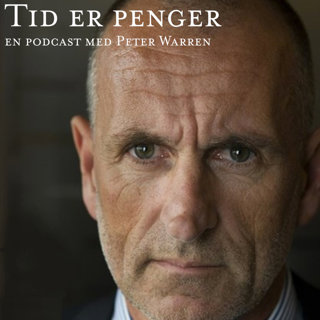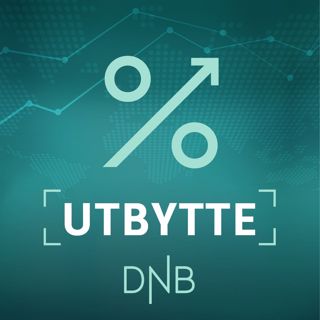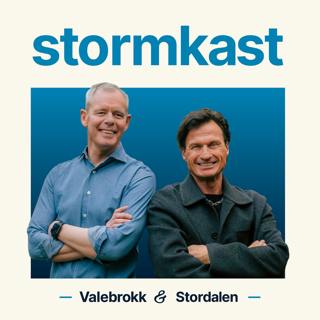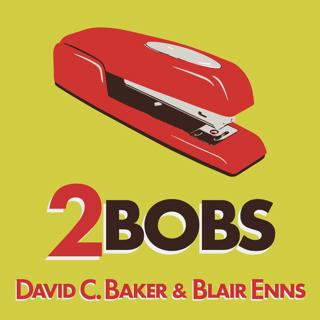
There Are NOT Seven Reasons Why Clients Hire You
Blair and David work on clarifying things by coming up with only six reasons why businesses hire creative firms.
10 Apr 201930min

Where Do Ideas Come From?
Blair and David share the places they find good ideas that they turn into content, the best of which end up being incorporated into their services. Read the transcript ➝
27 Mar 201932min

It's a Small World After All
David finds Blair's thoughts fascinating on how far agencies should service or pursue clients geographically, and whether or not the location of a firm should be a factor.
13 Mar 201929min

Why Account People Should Close New Business
David gives Blair four practical reasons for sales people to hand off new business to the account person before the deal is closed instead of after.
27 Feb 201923min

A Beginner's Guide to Negotiating
David gets into Blair's head to get his 10 basic negotiating tips that he has worked with clients on over the years. LINKS “10 Negotiating Tips” (with 5 bonus tips) “Selling in One Lesson,” 2Bobs episode 49 Buying Less for Less: How to avoid the Marketing Procurement dilemma, by Gerry Preece Negotiating with Backbone: Eight Sales Strategies to Defend Your Price and Value, by Reed K. Holden TRANSCRIPT DAVID C. BAKER: Blair, today we are going to talk about 10 really interesting ways you can get your spouse to go ... Wait, I haven't, quit laughing. I haven't - BLAIR ENNS: I'm out. DAVID: How to get your spouse to go to the place for dinner that you want to go to. BLAIR: Okay. DAVID: How's that? BLAIR: Sure. What kind of trouble could we possibly get into? DAVID: Yeah, that would be a really stupid pod ... No. What we're talking about are some negotiating tips that you've thought about over many years. You've polled, you've tested, you've researched. You've worked with clients on. You've consolidated them into this one place. We may get to some bonus tips. I don't know if we'll have the time, but we definitely want to talk about the 10 basic tips around negotiating. Can you get me inside your head for a minute before I start pulling these out from you one by one? BLAIR: Well it's pretty crowded in there. What is it that you wanted access to? I gave you my password to everything the other day. What else do you want? DAVID: Is this going to be this difficult today? Are we going to do that? Or are we going to be cooperative? BLAIR: I'm feeling a little punchy. DAVID: Yeah, I see. I see you are. BLAIR: I'm in another hotel room. This is day 31 of a 36 day road trip. I tweeted today, "Okay. I've answered the question, how much travel is too much?". DAVID: Yeah. BLAIR: Getting into my head, I think these tips, I considered it kind of a beginner's guide to negotiating. I don't consider myself to be an expert on negotiating. But you can't advise people on the subject of selling and pricing without knowing something about negotiating, so a while ago I took a bunch of the best practices that I've encountered on the subject of negotiating, and kind of put it into one place. That's I think what we're going to talk about today. I'll call it a beginner's guide to negotiating, and we're referencing to these 10 tips that I've published previously. DAVID: Hopefully it will be more than a beginner's guide. But we'll just set people's expectations low. BLAIR: Yeah, right. DAVID: Then we'll exceed them. BLAIR: That's exactly what I was doing. DAVID: There are 10 in here. But there are two of them that we've actually had the chance to talk about in previous episodes. I will reference all 10 of them. But then with two of them I'm going to point people to a previous episode if they want to really bone up on all that stuff. DAVID: The first one is, avoid over-investing. This is one that we have talked about. It was in a recent episode. It was called Selling In One Lesson. The idea is that the more somebody wants it, the more at a disadvantage they are, right? Just summarize that for us and then we'll move on to the number two one. Over-investing is the first one. BLAIR: Yeah, so you can, a good metaphor for negotiating would be a poker game where there's times when you're bluffing, when you're playing certain hands. But in particular the idea of bluffing. Or calling somebody else's bluff. You can apply some of the tips that we'll talk about here. If it's very clear to the client that you want this so bad, and it's clear to the client not just from what you say, but from all of the free work that you have done, all of the costs that you've incurred. If you are clearly over-invested in the sale then you do not have much of a bargaining position. Because you are demonstrating through your behavior that you want it more than the client does. Therefor the client is the one with the power in the relationship. BLAIR: It's a big broad rule. Avoid over-investing in the sale. As you pointed out, we covered this in detail in the podcast, Selling In One Lesson. DAVID: Okay. Even if you do desperately need it, don't act like it. BLAIR: Right. DAVID: Second, and here we want to start diving in in more detail. The second principle for negotiating is, ask the question, "Have we already won?". As I read that, I wasn't sure exactly what you meant. That led me to dive a little bit deeper into this, and I found it really interesting. "Have we already won?". Are you really asking that specific question? Or is it more just framing the negotiating in your head? BLAIR: This is a negotiating point specific to the topic of negotiating with procurement. This comes up a lot, I wrote about this in my book, Pricing Creativity: A Guide To Profit Beyond the Billable Hour. In the last month in the various places I've been, and the talks that I've done, and the training I've done, procurement has come up a lot. Where I'll talk about a principle and somebody says, "Yeah, but you don't understand. That doesn't work with procurement". BLAIR: The role of procurement, and I learned the most from this listening to a talk by a guy named Tom Kinnaird. Tom was head of procurement at WPP. Gerry Preece is another great resource on negotiating with procurement people. Gerry is an ex P&G global design procurement person who has a consulting practice, and he's written a great book on dealing with procurement. It's called Buying Less For Less. I think the subtitle is The Marketing Procurement Problem. BLAIR: When I was listening to Tom Kinnaird, who was former head of procurement at WPP and is now a consultant, he was giving away at a conference in London I was also speaking at, he was giving away some insider procurement tips. One of the tips he gave away was, you need to know that procurement often lies. When procurement shows up at the end of a negotiation, when you feel like you are the ordained firm, you've either won the business or you're in the pole position, and then procurement shows up to negotiate the final deal. In that situation, almost greater than nine out of 10 times, you have won. You've already won, and the concessions that procurement is demanding that you make, it's not mandatory that you make them. BLAIR: Procurement's going to communicate to you that, in order for you to win the business, that it's still a competitive situation, they're still considering other firms. In order for you to win the business you have to cut price. The general rule of thumb is, if procurement shows up late and starts using that language on you, they're lying. I talk about this in my next article. I'm actually quite heated about it in the next article. So far I'm only at the unedited version of it. DAVID: Still very angry. BLAIR: Yeah. It will be published by the time this podcast goes to air. Hopefully it's a little bit more measured. But in it I make the point that procurement is the only profession in the world that I know of where they're taught that it's okay to lie. It's okay to outright lie in the course of everyday business. When they show up late and say, "You need to sharpen your pencil. We've got three bids. You're the highest bidder. You need to get your price to X or you're not getting the business", they're almost always lying. BLAIR: Now when procurement shows up at the beginning and they navigate the entire purchase process, you have another problem. They're not lying. It's an even bigger problem. They're seeing what it is that they're buying as a commodity, so you have to ask yourself, should you be even participating in a process where the client clearly does not value what you do, and it's seen as an expense to be minimized rather than an investment to be made? But the lesson is, so the tip is, ask the question, "Have you already won?". BLAIR: When you're in a situation where it feels like you've won, and then procurement comes in and says, "You haven't won yet. You've got to get past us. You have to give us all of these concessions", don't believe them. In fact I would go further and say, "We have this idea that we've got to throw procurement a bone in a situation like this. We'll give them this one win and then they'll go away". That's not how they work. They're trained to keep asking until you say no, so you want to start with no. BLAIR: We could go deeper into that. We could do a whole podcast on negotiating with procurement. But that's the tip. You ask yourself before you start giving concessions away, ask yourself, "Wait a minute. Have I already won here? Is it really necessary for me to make these concessions?". Because in a lot of situations you have already won, and it is not in your interest to make any concessions whatsoever. DAVID: The main clue is found in when procurement comes. At the beginning or the end. BLAIR: Yes. DAVID: That's the second one, okay. The third tip here takes this further, and it's around the idea that procurement lies regularly. Not just about this one thing that we're talking about that relates to how to decipher the timing and whether you've actually won. BLAIR: Yeah, so it is a recurring theme here. You might think, I always say, "Attack ideas. Don't attack people and organizations". But I always make an exception for procurement. Reid Holden, who's written a couple of great books on pricing and also on negotiating, and he infiltrated the world of procurement. He has this great line, and I repeat it often. "80 percent of procurement people give the other 20 percent a bad name". DAVID: As opposed to 20-80, yeah. You're flipping that around, right? BLAIR: Yeah. In the story I'm writing, I'm writing two different examples of two different agencies pitching two different pieces of business and then having to deal with procurement. One hold their ground and the other one doesn't hold their ground. The example where the agency holds their ground, they're told in the beginning, "The account is a $500,000 a year retainer", and so they do a little pilot project for free. They prove validation. Then they're handed off to procurement and procurement says, "The fees are not $500,000. They're $300,000. Take it or leave it". The firm walked away, and in the end the client came back and said, "Oh, no no. We want you to work with us. You can have the original $500,000". BLAIR: As I was talking to the agency president who was telling me this story, I said to him, "If I were you in that situation. If I'd heard that from the procurement person, I would want to get the client and the procurement person in the room together. I would want to look them both in the eyes and say, 'I want to know which one of you lied to me. You said it was $500,000 in fees. You said it's not $500,000, it's $300,000. One of you lied. Which one was it?'". BLAIR: We know who the liar is. The liar is always procurement, right? Because they're taught that it's okay to lie. But I just imagine, and I'm ranting in this article, and you can feel me getting emotional now. Because I can't believe that we continue to give this egregious behavior a free pass. We need to call out irresponsible practices and outright lies when we hear them from our clients and our clients' procurement department. I hope I've addressed the issue of three procurement lies. I feel like we should probably get off the subject of procurement. DAVID: Well I turned the recorder off a long time ago, and what people are going to hear instead of you ranting is me providing a very reasonable response to all of these things. BLAIR: Instead of my therapy while I lie on your couch. I'm going to a marketing procurement conference in London. I think it's in June. I'm really looking forward to being in the room with these people, and having an open conversation about what I think of their business practices. DAVID: The third point is, beware of procurement lies. Let me just read some of these and then we'll go to the next point. "It's down to you and one other". That's one lie. Another one is, "Yours is the highest bid". Another is, "You have to cut your price to remain in contention", or all these other things that you might hear. BLAIR: Or, "Take it or leave it. There's no negotiating. There's no middle ground. Here's my offer. Take it or leave it". That's another one. DAVID: Right, yeah. Then a concession, you say, is an invitation to ask for more. All right. Let's get you back down to happy land, and we'll move off of procurement. BLAIR: Well we're still going to talk about procurement a little bit here in the next one. Go ahead. DAVID: The fourth point is, outwait the waiter. Outwait the waiter is the fourth point. Talk about that. BLAIR: Yeah. I forget where I heard this idea from first, because I really would like to attribute to the various sources that I've pulled all of these things from. It might be Chris Voss who wrote, "Never split the difference. Negotiate like your life depends on it". Or it might be Jim Camp. Or it might be Tom Kinnaird. I don't remember who. But the idea is, when you're in the final negotiations with people, and again it's almost always procurement. Because it's procurement who's trained in negotiating. That's another point. We really need to be trained in negotiating to counteract those on the client side who are trained in negotiating. BLAIR: One of the tactics that they do is, after you've won, or you think you've won, they slow everything down. Procurement will say, "I'll get back to you in this time period", and then they'll take longer. You'll reach out to them and leave a message, and they'll just kind of stretch things out to make you sweat and to make you more nervous. That's the way they can extract more concessions from you. BLAIR: Again, if you think back to the formula that we talked about in Selling In One Lesson, P equals DB over D. Your power in the sale is a function of your desirability, is your desirability greater than your own desire? Because if it's not, if you're communicating that your desire for the client and the engagement is higher than the client's desire, then you have the least power in the relationship. The tactic when procurement is trying to slow things down to make you sweat is, you slow things down even more. If they take 24 hours to get back to you, you take 48 hours. You communicate to them that, "Yeah, that's fine. We're in no rush. I mean, if this is going to happen it's going to happen. If it isn't, that's fine too". BLAIR: It's almost a game of, and there are times when negotiating really is a game and it really should be fun. It's never fun if you're over-invested in the sale, right? DAVID: Yeah, right. BLAIR: But it should be fun, and you should play this game. Instead of being anxious you just play it out and outwait them. If they delay, you delay longer. If they say they can't speak for 48 hours, you say you can't speak for 96 hours, etc. DAVID: Just multiply by two. BLAIR: Yeah. DAVID: They're saying, "We need to slow this down in some way", and they're expecting you to indicate some investment in the sale. Like minor panic or whatever. Instead you're flipping this around and saying, "Ah, no problem at all. Do you need more time?". BLAIR: Yeah. DAVID: "That's fine. We're not in any hurry, okay". BLAIR: You got it. DAVID: Got it, so that's the fourth point. The fifth point here is to beware the white knight. I don't think we need to talk too much about this one, because in a slightly different context we did talk about this in an episode called How To Drive Your Employees Batshit Crazy. Here we were talking more about management and so on. But the principle is the same. It's this idea that we are going to bring in the big white knight to save the day. Just give us a few sentences on this one. BLAIR: Yeah, the white knight is usually the senior person on your team. There's some negotiating going back and forth. Everything's proceeding, maybe well but slowly. Maybe it doesn't feel like it's proceeding well. But the principle or the senior person swoops in and says, "You know what? I'm going to fix, I'm going to get this deal done in one fell swoop". They show up and make a concession, thinking, "Okay. I'll just make the one concession and close on this". What they don't understand is, they've just undone a lot of work being done by other good people. BLAIR: Sometimes it makes sense, if you think of the previous tip about outwait the waiter. Sometimes it makes sense to just, it's part of the negotiation. To slow things down. When the principle shows up to speed things up and says, "I'm going to make this one concession and close the deal", then they realize, that one concession is really just the beginning. They have just created a whole new set of problems, and the likelihood that the agency is going to close this business at a profitable position has just diminished significantly. BLAIR: The idea is, be careful about allowing the senior person, usually the principle, to swoop in at the last minute and make a concession that they think is going to just close the deal. Because it usually doesn't work that way. DAVID: Yeah. On the other side of the table, they've discovered where the weakness is and how they can get even more concessions. Because you've tipped your hand. That's a good one. DAVID: All right, number six. Decide your give and gets in advance. Decide your give and gets in advance. Which is opposite of what you just talked about, where somebody else swoops in without much consultation. We might make a concession, but we're going to do it very intentionally. We're not going to be willy nilly here. Decide your give and gets in advance. Who's doing this? The team as whole? Anybody that's in a position of power? How does this work? BLAIR: That's a good question. It's not just the person who's on the front lines. It's the people ultimately who have to live with the decision. It's a senior member. It's probably a team decision or the decision in the principle. The idea here is similar to going into an auction, right? We go to an auction, we think, "I'm not going to do anything stupid", and we end up bidding these crazy high prices. Because in part, loss aversion bias kicks in. We make a bid, we mentally own it, and then somebody outbids us and now we've lost something that we just a second ago emotionally owned. BLAIR: What the science shows is, we value losing something about two times as much as we value gaining it. In an auction that causes us to do crazy things. The way you combat that going into an auction is, you have an honest conversation with yourself about what your absolute maximum price is, and you do not deviate from that maximum price whatsoever. You do not allow yourself to get swept up in the moment. You hold the line by making the decision in advance. BLAIR: The principle here of, "Decide your give gets in advance", is the same thing. You decide, what are you willing to give up in advance in the negotiation? What are you not willing to give up? What is it that you absolutely need to get from the client, and what are you willing to take a pass on? You make those decisions in advance so that you do not find yourself in the middle of a negotiation, while at the table or in the conversation, giving away something that you are going to regret later. You just draw the boundaries in advance of the negotiation. DAVID: I want to take a slight detour here and ask you a question. Because we're assuming that this is occurring at the outset of a new relationship in many cases. If you do this right, do you have to play these same games in subsequent negotiations with the same client? Or do they get and sort of figure out your style and where the lines are, so that it's a little bit more efficient later? BLAIR: Yeah. There's two different camps here, and we may be opening a big can of worms. I mean, it's a legitimate question. There's the negotiating with procurement camp, where if you really are using these principles and you're getting into these protracted things and you have these standoffs, you win. You've won the first round. That does not mean that procurement's not coming back for you even harder. When you're going into a relationship with that type of organization, you're going to win some battles. Ultimately you will lose the war. Ultimately everybody loses the war. BLAIR: The idea is that you get to a point where, "All right. This relationship is no longer fruitful. They've kind of beaten all of the margin out of us over the long term". You know, hopefully it was a good run. BLAIR: Then on the other camp would be good clients where you're not dealing with procurement, or they're more of a value buyer where you just have to use one or two of these techniques, and you're not setting up a long term war where you're constantly battling each other. It really could be one or the other, where you're constantly in a negotiation. Always defending what you know is an onslaught that you're ultimately going to lose in the end, but it still might be worth it. It might be a three, four year good run and it's worth fighting the battle. Or other situations where you just find yourself using one or two of these techniques and that's it. Then you find yourself in a good relationship with a value buyer who really values what it is that you do. DAVID: Yeah. I find that when I talk with my clients, and we share some clients, it's dispiriting enough when they have to enter these negotiations with a new client. But when they've worked with a client for years and then this gets turned on them again, when they want to review the relationship. They almost are just intentionally forgetting everything that happened over the last four years, and you have to prove yourself again. There isn't much in business that can pull the rug out from under your confidence and slap you in the face than something like that. I don't even know why I'm saying this. It just hits me at the moment that it's very discouraging for people to have to do that over and over again. BLAIR: I agree. DAVID: All right. Number seven. Neuter the final negotiators. Neuter ... It's like we're watching a Game of Thrones episode here. What kind of a serial killer are you in disguise? Neuter the final negotiators. Okay. What kind of knife do we use here? BLAIR: Maybe there's a better word for neuter. What I'm talking about is, the moment that you have the greatest amount of power in the relationship is the moment when the client, not the procurement person, but the client says, "You're hired". DAVID: Mm-hmm (affirmative). BLAIR: When that happens, and often you go from the client saying you're hired to, then you get handed off to procurement or legal or finance or whomever. That other department will kind of, you've got to fight another war over there. But if you know the war is coming, if you know, if you're used to dealing with the same types of clients and you know there's a battle with procurement coming, use your power at its height. The moment you're hired. BLAIR: I had a client once who called me and said, "We're doing great. We're closing all of these really big deals. Seven figures. We've got all the senior decision makers in the room. But I have the same problem. It's like every time I get a call from procurement, 'You've got to knock 200 grand off of this', etc". BLAIR: I said, "Okay. Next time it happens, next time you close a deal, in the room you have the senior decision makers. You say to the client, 'Okay. We've got a problem here'. Everybody's in agreement. We're going to do this. Here's the price. Here's the scope. Everybody's in agreement. Everybody's excited about moving forward and really looking for the engagement. Then you stop and say, 'Okay. We've got a problem. We've just agreed on this. The price is the price. We've talked about the value that we're going to create. BLAIR: I'm going to get a call from your procurement person, and that procurement person is going to tell me that if I don't knock $200,000 or $300,000 off this price we're not going to do business together. The price is the price. We've just agreed on what we all agree is fair for the value that we're going to create. The price is the price. There's no economies of scale here for us to make the price cheaper. Can we agree, when procurement calls me', and then you look over at the client side and say, 'When procurement calls me, who can I get them to call?'". BLAIR: Now you're in this little, it's a little bit like a power play move but not as bad as it sounds. In that the senior client on the client side of the table generally will take responsibility and say, "No. Have that person call me". That's what I mean by neuter the final negotiators. Leverage the fact that you have the most power to combat procurement in the moment when the client says, "You're hired". BLAIR: Now the higher up you're dealing in a client organization, the more power you have. In this example my client, the agency, was dealing with senior people on the client side. Presidents of divisions. They weren't dealing with brand managers. Bu even some brand managers might be willing to lend some weight to helping you get around procurement. But again, you ask in that moment. The moment when the client says, "I want to do this", or, "We want to hire you". That's when you have the most power to neuter the final negotiators. DAVID: Well I think this would be fun to do. Because I can see saying it with kind of a twinkle in your eye, and they just smile and look at each other. Because they know that that is coming, and they kind of chuckle and say, "Yeah yeah. Here's who it'll be. This is what they'll say. We'll take care of it". I love this one. DAVID: All right. We're on the way to 10, and we're at number eight. This one is an A B thing. What you say here is that you should either be ruthless, or you should be collaborative. One place is going to take you somewhere. The other place is going to take you somewhere else. Which is which here? Be ruthless or be collaborative? BLAIR: Yeah, so it's both but you pick your spot. You be ruthless with other professional negotiators, and you be collaborative with clients. With good clients. Because you have to work with the clients. You don't want to get into ... If you're setting the tone of the relationship moving forward where you're in this somewhat ruthless battle, you have to be aware of creating the conditions, if we're just not a very fruitful relationship moving forward. But you really should be ruthless with professionals. Again, you could hear me getting a little bit emotional as I talk about procurement people. You don't want to do that. BLAIR: One of the advantages procurement people have is, they are not emotionally invested in the sale. They don't give a shit at all, right? DAVID: They aren't even people. They don't even have emotions. BLAIR: "They're bureaucrats, Morty. Shoot them". Or, "They're robots". It's a Rick and Morty line. We're going to get into trouble with the 20 percent of the procurement people who are out there. Again, I just say to my friends in procurement, I don't actually have any friends in procurement, but it's possible that one day I might have a friend in procurement. I would just say that, the problem isn't just in the procurement profession. It's actually in the organizations above procurement who give license to procurement to procure creative and marketing service as though they were widgets. They think that they can drive cost down without affecting the quality or the value to be created. You can't really do that. The responsibility isn't just with procurement. BLAIR: But back to, these people aren't emotionally invested. We, especially if you're the creative person coming up with the concept, we tend to be emotionally invested in the results. You be ruthless with them. You hold the line. As I've already said, they're going to ask until they hear no, so you start with no. There's no need to build rapport or kindness or to ever negotiate out of emotion. If you find yourself being emotional, see if you can't retreat, regroup, let go of whatever it is that you're emotionally attached to. Then re-engage again when you're emotionally detached. But it's like, be ruthless. Hold the line. Don't fall into the trap of this ridiculous idea that you're going to befriend a procurement or a professional negotiator and you're going to, somehow through the strength of your personality, you're going to get to a solution. BLAIR: As you've pointed out, they're robots, or they're bureaucrats. I use that term in this moment out of a little bit of a respect. What I mean by that is, they're not clouded by emotions. They've got a job to do. They've got an objective. They're marching steadily toward that objective and not letting their emotions cloud their judgment, so you should be able to operate at that same unemotional ruthless level. DAVID: All right. Number nine is, use a positive no. Use a positive no. Can you explain that? I presume you can. BLAIR: Let's hope I can. DAVID: Yeah. BLAIR: There are so many different ways that you can say no. I think so many of us have a hard time delivering the word no, because in so many of our businesses, what we do is we find a creative solution to every problem. We don't accept that the answer has to be no to something, so therefore we have a hard time saying no. BLAIR: There are all kinds of different techniques on how to deliver a positive no. I'll just give you a couple of them here. First you just kind of, if there's an objection, you just make sure that you restate the objection. "Okay, I'm hearing that affordability is an issue for you". Then you deliver your no. You start with kind of a yes. "Yes, I hear that affordability is an issue for you". Then you deliver your no. "Listen, I can't give you that price in this specific situation". Then you layer in another yes. "But what I can do is stretch out the payment terms a little bit", or something else. Or throw in some other forms of value. Throughout the entire time, your attitude is always positive. It's not, "Oh, you know, I don't think we can do this". It's not, "There's no way we can do this". BLAIR: There's a time for, "No way". But there's a time when you want to use a positive no. You're nodding your head saying, "Yeah, I'm absolutely hearing you that affordability is an issue for you on this. I can't give you that price in this situation that you're looking for. But here's what I can do for you". Then deliver what it is you can. "I can throw in some extra value. I can stretch out the payment terms a little bit for you". It's all about delivering no with a positive attitude. BLAIR: I'm not saying that's always the approach. I think there are times when it's just a hard line, "No. Take it or leave it", walk away. But in many situations it makes sense to deliver a positive no. DAVID: You're also demonstrating that you've listened. That you care. You may make a decision that's not one they would prefer, but you're not just simply closing up and not listening to them. That's part of restating this to them. BLAIR: Yeah. DAVID: All right. The final one is to use alternatives to no, and you've got a few examples here. Are these used with clients or with pros? I think I probably should have asked that question many times here, because it's been interesting to hear the distinction. Using alternatives to no. Who do you use these with, primarily? BLAIR: Yeah, I would put most of these, like use a positive no or use an alternative to no, I would put most of them under the collaborate column. That means with clients. Where I find myself tending to want to be more ruthless and just deliver hard nos to procurement. Now that's me a little bit worked up emotionally, violating what I said earlier. The truth is, a really good negotiator will use positive nos and alternatives to nos with procurement from time to time. It's not just all hard lines. Although I really believe that you begin with a super hard line with procurement. BLAIR: I think generally speaking, for sure you should use these approaches with clients. The people that you want to have a fruitful working relationship with that. A great alternative to no, and I think this one comes from Chris Voss. If it's not Chris it's somebody else. I'll also, I'm recalling that some of the other techniques I probably got from Reid Holden in his book, Negotiating With Backbone. It's a small book. It's a really good book. Both of those books are great books on negotiating. BLAIR: His line, and again I think it's Chris Voss. Instead of saying no just ask, "Well how would I do that?". If procurement is saying, "Listen, the fees in your proposal, we're not giving you that. We're giving you 60 percent of what you've asked for. You can take it or leave it". Then you essentially turn the problem back onto, instead of saying no you just turn the problem back onto the client. "Okay, 60 percent of the fee. How would I do that? How would I deliver the services that you're looking for at just 60 percent?". DAVID: Mm-hmm (affirmative), and a pause, right? At that point? BLAIR: Right. Always a pause, and we're not talking about that here, but I've talked about the power of pause before. When you pause after you deliver a no or an objection or an obstacle for the client to overcome, you want to pause because whatever you hear next gives you so much information about how much power you have in the buy sell relationship. BLAIR: You could also use a, "Yes, but", instead of asking, "How would I do that?". The client might say, "I don't know. That's your problem. How you do it is your problem". You might say, "Well do you think we have 40 percent profit margin built into this?". "I don't know, that's your problem". You could say, "Yes, but". You could say, "Well you know, I suppose I could deliver on 60 percent of that. I mean, if that's your bottom line. I guess we'll just put the interns on it and remove access to senior people. Access to principles. We'll take our creative director off of it, and yeah, we can meet your price that way". DAVID: They're starting to get a warm feeling. BLAIR: Yeah. I mean, this is where we're having fun now, right? I think when the client asks you to do something ridiculous, you could ask the client, "Well okay. How would I do that?". Or if the client's not going to participate in that question you can offer a solution. Again, this speaks to the title of Gerry Preece's book, Buying Less For Less. The idea that when procurement is buying marketing services, they drive the cost down. What they don't appreciate is, they're driving the quality down. Because in a people based business, the way you get your costs down is, you get less expensive people on the job. BLAIR: Just communicate that to the client. "Okay, we can give you that price. But here are all of the things that we have to strip out". What you're almost certainly going to hear is, "No, we want those deliverables or value drivers at the price you quoted". That's where you can laugh and say, "Yeah, well let me tell you about the things that I want in my life too, that I'm not going to get either". DAVID: One of the things that I've been thinking about my own situation over the years, and something that's hit me. It's given me this kind of warm feeling. I know that sounds weird. But it's when I find myself getting a little bit angry, and that's because I feel like I'm being taken advantage of, or not appreciated to the level I should be. BLAIR: Yeah. DAVID: I can relax and tell myself, "I don't need this that badly. Why don't I just smile and make this more of an interesting exercise?". Not so much a contest, but an exercise to see what I can learn. As long as I'm willing to walk away from it, I don't understand why I'm getting angry. I need to treat this more as a business conversation. It frees up my mind to think in these categories and not get all wrapped up in myself at some point. BLAIR: Yeah. I call that smile and defy. You smile to yourself for a minute. Remind yourself, "Let's not get carried away here. This is just a game". Then you defy what it is that's been asked of you. Then you just see what happens next. You have that ability to do that. I have that ability to do that. Because we're not over-invested in the sale. We're not allocating significant resources from our businesses to close any one particular deal. DAVID: Yeah. BLAIR: When you don't over-invest, and I know and work with lots of agencies who have learned to not over-invest in the sale, everything changes when you're not over-invested. It's easier for you to smile. It's easier for you to use some of these techniques. It's easier for you to walk away from poor fits, knowing that if it really is a good fit, it will come back on your terms. DAVID: Care a lot, but don't care too early. That should be the title of this. BLAIR: That's great advice, yeah. DAVID: All right. We will put some bonus ideas in the show notes. Marcus will help us with that. These are 10, and we'll throw some more in there. This was really fun to talk about, Blair. Let's hope that none of these procurement folks listen to this before you meet them in London, or we will have some real life neutering taking place. BLAIR: I would prefer they did listen, and we had some frank and fruitful discussions. DAVID: Okay. Thank-you, Blair. BLAIR: Thanks David.
13 Feb 201935min

Seven Positioning Mistakes to Avoid
After having discussed positioning in multiple previous episodes, David puts together in this one episode the seven most common mistakes firms make when positioning themselves.
30 Jan 201934min

Debriefing After a New Business Call
David asks Blair about using "after action reviews" following sales calls, and the two key questions that should be asked as a part of that debriefing process. LINKS Episode #15 - The Best Learning Method Ever Devised: After Action Reviews, from The Soul of Enterprise Podcast with Ron Baker and Ed Kless TRANSCRIPT DAVID C. BAKER: Blair, today we are going to talk about debriefing after a new business call. Not after just a business call, but a new business call, right? So how did this topic come to your mind? What got you thinking about this? BLAIR ENNS: I'm a fan of Ron Baker and Ed Kless' podcast, The Soul of Enterprise. They had a podcast way back when and they made the comment that they see the after action review as the most powerful ... I'm gonna get this wrong, but is the most powerful knowledge tool ever invented. DAVID: Wow. BLAIR: That's a big statement. But we were using after action reviews in our business. And we still use them. There's various forms of them. Their origin actually came out of the US Military in the Vietnam War as a way of looking at campaigns. It's a way of essentially reviewing what happened without being critical of any individual and keeping the whole thing positive so that you can figure out what you would do next time. In fact, an after action review is really just okay what was the goal of the thing that we did, whatever the thing we did is, what went well, and then what would we do differently next time? And then there's some protocols around who speaks first and who speaks last, and how a rank is supposed to be unimportant. But I'm listening to their podcast, I realize, oh, yeah we do this all the time in our business. And it is really valuable. And I'd never thought of it as maybe the most valuable knowledge tool ever. But it occurred to me that I've never really advocated for after action reviews in sales. But I think it's probably a pretty good idea especially if you or employee who's on the front lines doing sales or doing new business development, if they're new or they've just come out of some training. Or you're stuck and things aren't going your way. BLAIR: But it's probably a good idea to review all of the key opportunities. The ones that you win and the ones that you lose. But even in the early days, I think just a new business meeting like a phone call. A kind of a lengthier phone call. Something lengthier than no we're not interested, thanks, goodbye. Or a face to face meeting I think is probably a really good idea to review. Let's just review what happened, and decide what went well, and decide what we would do differently next time. DAVID: So just a couple of housekeeping things here, if it's a meeting where you and somebody that works with you and you're gonna do the review, how soon do you do this? Is it important to do it right away after the meeting ends? Even before you get back to the office? I've got several housekeeping questions, but that's the first one. BLAIR: Generally speaking, the sooner the better. We were recording this on a Friday at the end of the week, we had two after action reviews this week of bigger things that happened. One was quite big. The sales period that just passed. That's about two months long. So what happened there. And another one's kind of a smaller thing that we're working on that's quite detailed. And sometimes it makes sense for a little bit of time to go by so that you can process what actually happened. BLAIR: But I think in the early days, if this is new for you, then the sooner the better. And then the times when you are allowing a little bit of processing time or gestation time, you know enough to make notes as things occur to you. Because the danger is if you leave it too long, you're going to forget a lot of the valuable points. Or you're going to forget the specifics of what happened or how you felt in certain situations. And those can be really valuable. DAVID: It seems like if it's you and let's say you're training somebody that's newer to your firm, sometimes it might make sense to have that person give their perspective before you give yours so that you get some independence, I would guess too. So that's interesting. And I could see this happening then after a meeting that both of you attended or maybe after a phone call where you're on speakerphone. How do you handle it when you're not on speakerphone? I presume half of the states in the US allow you to record a call without the other person's consent. But I presume you're not necessarily recording the calls. How do you handle that? How do you get feedback from somebody else if they weren't actually on the call? BLAIR: Yeah. Let me just speak to that issue of kind of rank or who goes first that you touched on. Coming out of the US Military, the idea is when they walk into an after action review, everybody basically takes a hat off and puts their insignias face down on the table. So the idea is that rank goes away. And I think a further idea is that you generally encourage the lower rank people to speak first. So the last thing I know when we're doing an after action review, I make sure that I'm not the first one to contribute. I don't want people saying, "Yeah, I agree with what you said." You really want to hear what others have to say. So that's kind of the housekeeping point. BLAIR: And then your question around- DAVID: Recording. BLAIR: Recording. In some ways, we don't actually do this in our training program. We think about it and talk about it quite a bit. The idea of we should have our clients record some of these calls and bring them to class or to interact with their coach to get some feedback on that. And I haven't closed the door on it, but there is something that I find a little bit troubling about recording a phone call when the other party doesn't know it's happening. But I don't think it's necessary to record it. To me, there's really two key review questions that you want to think about in your after action review or debriefing meeting when you're debriefing on a new business interaction. BLAIR: And the first one is what assumptions did I make in the sale? We can break that down into different categories where you would ask that question. And then the second one would simply, where did I feel uncomfortable? DAVID: Ah, so keeping it very simple there, right? BLAIR: Yeah. DAVID: Because that's gonna surface some things for you to talk about. BLAIR: Yeah. DAVID: You mentioned that you use a checklist for this. I find checklists really interesting. Have you read the book A Checklist Manifesto, by the way? BLAIR: No, I've heard of it. Haven't read it though. DAVID: Ah, it's a really interesting ... So pilots use checklists just to make sure they don't do something stupid like GUMPS. Gas, undercarriage, mixture, pump, seat belt. So you don't land without the- BLAIR: Forrest Gumps? DAVID: No, it's spelled differently. BLAIR: I would be thinking GUMPS, Forrest Gumps. That was a pretty good movie. Why was he jogging ... Crash. DAVID: And then you'd land on your belly of the plane because you didn't put the gear down. BLAIR: Yeah. DAVID: So you have a checklist of four things and it's NATB. So let's break that down. Need, authority, time frame, budget. Let's go down one by one. DAVID: So there's two questions. What assumptions did I make during the call and then where did I feel uncomfortable? So under the first question, what assumptions did I make? There's four things. The first one is need. So talk about that. BLAIR: Yeah. And so the first assumption we're making here is this is what I would call a qualifying call. So a qualifying call or a qualifying conversation is when where you are assessing the lead. A lead is a clue to a possible sale. So you've got a lead represented by an individual. You're getting that person on the phone or you're having a face to face conversation. And then you're vetting that lead to determine if the opportunity exists. Some sales people just work through that conversation subjectively. They feel their way through it. But it's really good to have a framework. And the most common framework is as you call it, NATB. Or sometimes referred to as BANT. We don't use either of those acronyms. But they're helpful here. So it's need, authority or decision makers, time frame, and budget. BLAIR: So assuming we're in a qualifying conversation, that's the framework we're using. So the first thing we're doing is we're essentially uncovering need. And the question is what assumptions did you make around need? And the first big mistake around need is the client says we need a new website. And then you just take that. Okay, new website. And you move onto authority or decision makers to talk about who are the decision makers, what's the decision making process. DAVID: So what should they do differently rather than just the website? You're suggesting they dig deeper than just the website when they're uncovering that need? BLAIR: Yeah. So there's an understanding in sales that the first stated need that you get from the client is usually some sort of tactical need or at the very least, it's what I would call self-diagnosed. So I understand my problem, I understand the solution that I need, and here's the solution that I need. But you as the practitioner, you need to understand for yourself. And you need to validate the client's self-diagnosis. And you might not fully validate in the sale. You might have to sell a diagnostic. So you might have to do some further validation in the engagement. But in the sale, you do have some obligation to do some initial assessment. So beyond just taking the client's word for it, yeah, we need a website, there's a school of thought. It's called the Five Why's School of Thought that says you ask five why's. Okay, well, why do you need a new website? DAVID: Yeah. BLAIR: We need a new website because online sales are dropping. Well, why are online sales dropping? And then you kind of continue to peel the onion in this five why's way. One day I woke up and I realized it's one of these things that just repeated a lot. This idea of five why's, I heard it before and I thought it made a lot of sense. And I woke up and I realized, man, if you have to ask five why's, your first question is a pretty shitty one. DAVID: I love that. So the idea is you're getting to the most powerful underlying need. The one that they're gonna be willing to pay you the most money to fix, right? Because if they land on the tactical, that's part of how they're framing this relationship with you is that maybe they want to pay you as a tactician rather than as a strategist. BLAIR: Yeah, I mean, I'll ask my clients, how often have you been hired? Clients said, "We need X," you said, "Okay." You were hired to do X, you started delivering on X, and you realized, "Oh my god, they don't need X, they need Y." And everybody nods knowingly. It happens all the time, doesn't it? And that's because you made assumptions in that qualifying conversation around the topic of need. And essentially you took the client at face value for is this what they really needed? And you didn't either peel the onion or come at it another way. And I don't want to go too deep down that rabbit hole, but you can look at need as expressed tactical need and then you can get to the underlying business need. And the underlying business need is we're no longer relevant. Clients are buying from somebody else. DAVID: That's much deeper, yeah. BLAIR: Right? So that's a deeper need than ... Well, you don't need a new website, you might need to be repositioned. You might need to rethink what business you're in. You might need to launch new product offerings, et cetera. You might need to think of new service lines. Whatever it is. And then there's ... We can talk about needs versus wants. And maybe that's a subject of another webcast because you've got the corporate needs that the person might be expressing. But really, if you want to win the sale, you're gonna have a significant advantage if you can get to what it is that that personal individual human being wants. BLAIR: Again, that's a deeper topic. But the question is what assumptions did it make under the area of need? DAVID: Right. And that's the first one. BLAIR: Yeah. So it's great if you have somebody asking these questions of you. Okay, what assumptions did we make around the area of need? What did the client need? Could that have been misinterpreted? Is it possible that they need something else? Did you explore? Did you ask five why's? Did you get to the individual wants? Et cetera. So that's the first one. DAVID: Okay. The second one is around authority or decision makers. And I'll tell you, this one perplexes me because if I could do this like on the forms of my website for instance, I would say are you a decision maker or you aren't? And the problem I have is that people won't be honest about that because they can't tell me that they're not a decision maker because they want to be a decision maker even though they know they aren't, right? You can't say, "Are you a decision maker? Are you a loser? Check the box." Nobody's filling out my form. This explains it. So how do you get to authority? I'm really interested in how you probe around this to surface the right answer. BLAIR: Yeah. So this is the most common area where people make the most assumptions and they're most likely to be tripped up later on in the sale because they made an assumption about decision makers and decision making process. And the problem as you pointed out is people are not immediately forthcoming about authority that they do not have. So if you were to ask the closed ended question, are you the decision maker on this project? Is it your responsibility to hire a firm like ours? You're almost always going to get, yes. DAVID: Yeah, of course. Right. Why else would I be talking to you? BLAIR: So a great opening question would be, in addition to yourself, who else needs to be involved in this process to hire a firm like ours? Right? So open with that question. And then you want to rely on your kind of hunch and start probing in specific areas. So you might say if you think this person's needs to be involved you would say, "Does your boss, the CEO, does she need to be involved in the decision?" And you might hear, no, no, no, no. DAVID: I just tell them, after I make the decision, I'll disinform them. BLAIR: Yeah. And then so a great follow up question to that would be does anybody need to approve your decision once you've made it? DAVID: That's a nonsense question, right? On the face of it. BLAIR: But it's a fantastic question. Does anybody need to approve your decision once you've made it? Yeah. The CEO needs ... It's a rubber stamp. Okay, the CEO is the decision maker. And you'll find, especially with new salespeople, if you're the coach and you're facilitating this after action review, you're going to find that repeatedly, the big assumptions are made here. And later on, they'll be the expensive ones. DAVID: Okay. So first one is need. Second one is authority or decision making. The third is time frame. This one stumps me a little because I don't even know why it's important. Why do we even ask time frame questions? Why is this even on here? I get the previous one. I don't get this one. BLAIR: There's really two different reasons we ask time frame questions. And I think most people are oblivious to the most powerful reason. And the most powerful reason is time frame is the surrogate for intent. And the obvious reason is we want to know when they want to get this done. So can we start planning resources, et cetera. So when would we need to start, et cetera. So you start thinking about how and when would we tackle the job. But really, the primary importance of your time frame question is you want to discern through your time frame questions. Whether this is on the wish list or the to do list. And my favorite time frame question is just that. Which has nothing to do with time frame. It's all about intent. You're trying to discern whether or not somebody's just kicking ideas around, they're still contemplating, or they've decided no, we're going to do this project and we're going to hire a firm like yours to help us. BLAIR: The usual time frame questions are when do you need to get started? When do you need to have a solution in the marketplace? Looking forward, is there a milestone or an event that you need to hit? Do you need to be in the marketplace or have this change or this project launched by a certain date? Et cetera. And if you don't get the answers you're looking for ... And what you're really looking for is somebody who's anchored their change in behavior to a future date. BLAIR: This might get a little bit deep here, but a great way to think about selling is change management. So a great model for how people buy is how people change. So you can take any model of change management and you can just study that and become a better salesperson. And when you look at how people change, when they make a decision, I'm going to lose weight, or quit smoking, or divorce my spouse, or propose to my girlfriend. What they do is as soon as they make the decision, they look forward in time and then they anchor their change in behavior to a date. You could quit smoking on November 3rd- DAVID: And ask your girlfriend to marry you the same day. BLAIR: Yeah. But when it comes to quitting smoking, or losing weight, or something, you wait until the clean slate of a new ... You wait for January 1st. That's why people make New Year's resolutions. And that's just a sign of somebody who's formed intent. Because they've basically thought, I'm going to do this. They have looked at the calendar. And they've anchored a change in behavior, or the outcome they're looking for to a specific date. That is a sign of intent. That is a late stage opportunity that you should now begin to prepare for to go into closing mode. DAVID: Using this in my own experience, it's resonating some in a new way. I just hired an expert to help me with something. And I was very transparent with them about the timing and the money, which I guess we're gonna talk about next as the fourth one here. Fourth assumption. But when I'm buying something besides expertise. When I'm buying a car or recently I signed up at the airstream traders website. And there's a question in there how soon are you going to buy, right? If I want somebody to treat this seriously, I'll say this week. If I don't want them to bother me, I'll say I'm just curious. But when it comes to hiring an expert, I am very transparent about this. And I'm assuming that that's the case in the scenario that you're describing that if it's a real opportunity for this firm to be hired as an expert, if they ask the right questions, they're going to get the right answers. There may need to be a little bit of probing, but they want to be careful about that. BLAIR: There's an answer to your time frame question that we make assumptions around all the time. And this is something that would need to be probed in your after action review. If I'm the salesperson and I said, "When do you need to get this done?" And the answer is ASAP, right away, you can't proceed on that basis. You need to ask the why question. Okay, why right away? Well, because it's something I've wanted to do for a while. Okay, well, when's right away? Well, next 30 days. What if we don't get it in the next 30 days? Well, 60's fine. I'd prefer 30. This is getting into this murky area here where I start to get suspicious because I think this might be a chronic contemplator. BLAIR: It's great that you have somebody who has some urgency, but you want to look for the reason why there's some urgency. So was there a triggering event in the past? But really, you want somebody who's looked forward into the date and said, "Okay, we're gonna start on this date or we need to be in the marketplace by this date and here are the more valid reasons why." A great one would be we've got a board meeting or a trade show. Those are rock solid events. DAVID: Drop dead dates. If we miss it we're- BLAIR: Yeah. And then you know there's intent around that. So this idea of ASAP, that's the same as never. So if you get ASAP, you need to unpack that, you need to explore it, you can't just assume that ASAP means there's actually intent. DAVID: You know what I love about this is that you're not focusing here on what you say. You're focusing really on the questions you ask so that you can elicit the right information. And as you're going through this debrief, you may pause and say, "You know what? At that point, this is the question you ask. This is the question you could've asked and it might have sorted this out from a real opportunity and not a real opportunity." So it's more about asking questions. That's such an interesting thing to think about. Right? See, I'm asking a question right now. BLAIR: Yeah. I agree. When I think back to my consulting days and how many times I had the ... I'd get a phone call from a client and then I draw this little grid in my call log and start asking questions. Okay, what was the need? Who are the decision makers? I go through all this and just debrief with them. And then your spidey sense, you're not getting all the information. And you're not emotionally involved. But it's amazing what you can pick up. The assumptions just kind of jump out at you. And then the second area we're gonna talk about after budget of where you feel uncomfortable, that's probably even more important. DAVID: Yeah. Okay, so what assumptions did I make? First one was need, the second was authority around decision making, the third, which we just talked about is time frame> and the fourth, the final one of these four, is budget. Let's talk about that and why everyone get's tripped up here. I get a lot of questions from my clients around this and I never really know what to say because I don't do sales training like you do. So why do we get tripped up on budget? BLAIR: Well, first of all, it's the topic of money. And there's a certain amount of stress around the topic of money, as we've talked about before, or the avoiding talking about money. And then there's the negotiating that happens. And clients kinda negotiate on the other stuff too. They won't give you all of the information but it's really on budget where the negotiating starts. I was taught that the first budget question is are funds allocated? Yes or no? I'm not asking for the budget. Have you allocated funds for this project, yes or no? DAVID: Because theoretically, it's easier for them to answer than what's the budget, right? BLAIR: Yeah. And just like the time frame question is about is this person interested or have they formed intent? And then the budget question takes somebody who has formed intent. Because if they're just interested, they almost certainly have not allocated funds. It's not universal, but it almost certainly have not allocated funds. But if somebody has intent, I've decided I'm going to do this, they anchored their change in behavior to an event in the future, the very next thing they do is they start applying resources to their situation. And that's usually in the form of people and budgets. BLAIR: So if somebody says, "Yeah, we need to do it by this event and I have allocated funds," this is a late stage opportunity that's eminently closable. Now it's closable if there's intent but funds haven't been allocated. And where some salespeople mess up is if you ask the question are funds allocated and the client responds with, "No, we don't know what to spend on this. You're the expert. We're hoping you could tell us." I wish I had a dollar for everybody who told me they were frustrated by that. Oh, they're trying to negotiate with me, oh. They shouldn't view it that way. It's a great opportunity. All it really means is yeah they've progressed this far. They formed intent, but they haven't taken the very next step, which is to allocate funds. And they're asking for your help in allocating funds. Why would you be frustrated by that? They're frustrated by it because you want the client to tell you what the budget is. DAVID: So that's not a problem? BLAIR: No, it's not a problem at all. I would actually prefer to be in a situation where there is intent and funds are not allocated. But when funds are allocated, the assumption is that they're not enough funds. You want to sell a solution that costs more. When funds are allocated, that's a sign that these people are ready to go. This is eminently closable. DAVID: Yeah. If funds are allocated, there is a budget, even if they won't tell you what it is. Is that a safe assumption? BLAIR: Yeah, okay. So let's say I'm playing the salesperson. Are funds allocated? Yeah. Yeah. We have allocated funds. Okay, great. Do you mind telling me how much? I'd rather not share that with you. As somebody who loves to role play stuff, I would just love being cheeky. Okay, I'm sorry. We're having a conversation. But you hiring us to potentially help you achieve whatever the benefits are that you uncovered and need. You've allocated funds for this. We're gonna need to work together closely on this if we are in fact the firm that you decide to work with on this. But you won't tell me how much you're going to spend. DAVID: And that's where there's a long pause, right? And you're gonna see who says something first. BLAIR: At some point, we're going to have to trust each other. And we're going to have to have a conversation about money, like adults, right? DAVID: Right. BLAIR: So my suggestion is we just begin now. Is there any reason why you feel like ... Well, I want to hear what your price is. Okay. Well, I can come in with a price, a range of prices, et cetera. And then you could say that's too high. Here's my guarantee. When it comes to giving you prices, I'll give you a range of options. And some of them will be within your budget. And some of them may exceed your budget. But to give me a reference point, please tell me what you've allocated in the way of funds for this. The idea that somebody's allocated funds and won't tell, it's either you're not gonna win this business because they're just kind of going along and you're the third bid, they're trying to protect an advantage for somebody else, or more likely you're just dealing with a junior level decision maker who needs to be schooled on how real business conversations should be had. There should be no animosity or anything. But I'm fond of kind of just stripping away all the pretense and exposing the ridiculousness of the point that yeah we have a budget, but I'm not gonna tell you what it is. That's just absurd. DAVID: Yeah. And you're good at that. You're much better at that than I would be because I wouldn't view it as a game. I would view it as sort of wasting my time. I like how you phrase this. DAVID: Okay. So those are the four assumptions that you need to think about. Let's talk about where you felt uncomfortable. So this is the second big question when you're doing an after action review, to use military phrase. Where did I feel uncomfortable? So talk to me about that. And why are you looking for the ... It's not where did the client feel uncomfortable. It's where you, the salesperson, felt uncomfortable, right? BLAIR: Yeah. If you only had a few minutes to do a debrief on a call, I would actually start with this, where did you feel uncomfortable? DAVID: Yeah. BLAIR: Usually you're uncomfortable because something isn't being said. DAVID: Something isn't being said. Like you're not saying it or- BLAIR: Something isn't being said. Yeah. Oh, okay. There's an elephant in the room and we're not talking about it. DAVID: Yeah. Which we've done a podcast about, right? The say what you think. BLAIR: Say what you're thinking, yeah. DAVID: Yeah, exactly. BLAIR: So the similar principle is to lean into discomfort and light up the dark places. So if you're feeling uncomfortable, you want to train ... This takes a little bit of practice. But you want to train yourself to go to where you're uncomfortable. You start to suspect that the client maybe isn't going to be able to afford you. So you would say, "Hey, before we get too far ..." You might even say, "I'm not sure how to say this. But I'm a little bit concerned that we typically work with companies who spend between X and Y and I'm just a little concerned about whether or not you guys would be in that bandwidth." So that would be a way to kind of bring up price if you're worried about price. Or you might get a sense that this person is really looking for a vendor type provider where it's really about responsiveness and turn around time and you really feel your business is built around the depth of your expertise and maybe customer service. It's there. It's good enough. But it's not your selling point. And this person might value that more. You might just bring that up. BLAIR: One of our key principles is you should view yourself as in a race with the client to object. If there's an objection in the room, like the other metaphor is the elephant in the room. But it's a potential objection. It's a reason why you might not do business together. You want to be the person to put that on the table because the dynamics of objections are such that when one person brings it up, it's incumbant on the other person to address it. And it really doesn't matter which person or which party in the sale. Many salespeople were conditioned to just avoid these things that we see as potential objections. Hope they don't come up. And then when they do come up, the client says, "Oh, we should talk about price. Or we should talk about the fact that you've never done this before." Usually late in the sale, you've allocated all these resources, you've got it to the sunk cost bias is kicking in, you're trying to situate everything that you can to save it. DAVID: And you're on your heels. You're responding defensive. Yeah. BLAIR: Yeah. Now you're on the defensive. So why not just early on as soon as you sense it ... A great example would be okay, I'm really enthusiastic about this based on what you've said about the project so far. It's a little bit different for us. I can see how our experience translates to this. But I want to be completely above board. You need to know, we've never done this type of work before. DAVID: Oh, yeah. BLAIR: And then I just stop and say nothing, right? Just listen to the pause. We've never done this type of work before. And wait for the client to feel that space. DAVID: Even that second and a half right there when you waited, I felt uncomfortable. BLAIR: Right? So the client might say, "Oh, well, that's gonna be a deal killer on our end." Well if it is, you want to find out early, right? You don't want to find out when you're standing there with your 50 page PowerPoint presentation and you get to the last page and oh, yeah, one more question. Thanks for flying out here. We have one more question. Have you ever done this before? No, but excuse, excuse, excuse. It's gonna be okay. DAVID: Yeah. You've wasted all this time. Spent an all nighter. BLAIR: Yeah. And you build all kinds of credibility by leaning into that objection early. You can preface it by saying, "Really excited about it. We've got work that translates. But you need to know we've never done this before." Then pause. Don't say, "But it's gonna be okay." Let the client voice his or her concerns or say, "Well, it looks like you've done this other stuff. I think it translates. I'm okay with it." So you build credibility. You remove this thing that might kill the deal later on. So this idea of where did you feel uncomfortable. Did you address that discomfort or was it still there after the meeting? Right? And what you want to condition yourself and your people to do is when they start to feel uncomfortable about something, lean into this discomfort. Even if it's the way the client is treating it. They're really treating you like a vendor, you want to lean into that sucker. And we could role play that a little bit. DAVID: So this points out the fact that it's not just about what you're saying. But it's your listening skills. Your ability to read between the lines to recognize certain tones of voice and so on. And as you were describing all of this, I as thinking about how this isn't just useful for new business settings, but for account service too. You might even want to include them, right? In some of the conversation ... Some of the debriefing conversations because these account people are having these sorts of conversations all the time. More frequently with somebody that does come aboard as a client. BLAIR: Yeah. That's a really great point. And it makes me think about that in our training program, with every new term that starts and one just started this week, as we're preparing for the term, we're trying to find more and better ways to disseminate the thinking to others in the firm. Because for many years as a consultant, I would advise the salespeople to act a certain way. And then the account people are acting in an entirely different way. DAVID: Right. Yeah. Working against everything that you've built up from a positioning standpoint, right. BLAIR: Yeah. And all of these skills that work in new business development or in sales, they're all applicable in many of the aspects of account service. And some account people are more about server responder types. And the more senior people are really about leading the accounts. And those people in particular, those who are in charged with kind of taking the account into the new direction to the benefit of both the client and the firm, all of these principles would apply to them as well. DAVID: Yeah. Well this has been really, really good. So just finishing up kind of an overview of this again, there's two key review questions you go through. The first is what assumptions did I make? Four that you talk about there. The need, the authority/decision maker element, time frame, and budget. And then the second one is where did I feel uncomfortable? You identify those points and then talk about why you felt uncomfortable and what you might have done to address that issue sooner. This is really interesting, Blair. Thank you very much. BLAIR: Yeah, my pleasure, David. I enjoyed it.
16 Jan 201930min

Shoot - Now What Do We Do?
Blair asks David to make some predictions about the new year, and then they discuss some ways that businesses can prepare for and react to (God forbid) an economic downturn. TRANSCRIPT BLAIR ENNS: David, predict the future. Coming year, the year ahead ... It doesn't matter when people are listening to this or when we've recorded it, but in the year ahead is it going to be a year of abundance or is it batten the hatches, we've got trouble? DAVID C. BAKER: I think it'll probably be right in the middle. I think it'll be- BLAIR: Oh, come on. Make a guess. DAVID: Oh, no but that is a real prediction. BLAIR: Don't you love driving through these small towns and rural parts of whatever country and you see these fortune tellers that read the cards or whatever? And they're all in these shitty little offices. I'm just wondering, how does that work? DAVID: How come they're not in palaces? BLAIR: Yeah. Right. Or the 49th floor of some high rise condominium. DAVID: You talk with your clients, a lot of them every week, and I do as well, it'd be interesting to see what you're feeling right now. What they're feeling right now. My sense is that there's quite a bit of uncertainty, like the stock market wasn't great through last year, and unemployment is still low, and there's some political uncertainty. The world feels a little bit fragile. But really that's kind of in our heads. DAVID: The actual business results have been pretty good for almost everybody in the marketing field. There are a few isolated examples of firms that have struggled a lot. Often because they lost one big client or something like that. But it's generally, firms have been doing really well, and there's thinking okay, is this next year, is this year, 2019, going to be as good as last year? DAVID: I don't think it will be better. I don't think it will be a whole lot worse. I think we'll be lucky to have a similar year. But what do you think? BLAIR: For context, we're recording this on December 21st, 2018. So Happy Solstice by the way. So we're going into 2019 wondering how things are going to shake out. And the stock market, see I don't pay much attention to the stock market but I just noticed that all the gains for the year have been wiped out in the last few weeks. So the market is down. There is discussion within the broader financial markets about whether, or not we're headed for another 2008-ish crisis. There is the global political unrest and uncertainty. BLAIR: But in the face of all that, if you ask me to make a prediction of the year ahead ... this has nothing to do with reality, I realize as I was thinking about it. And only to do with whatever is going on inside of me. But I always believe my future is bigger than my past, to steal a phrase from Dan Sullivan, from Strategic Coach. So I'm an eternal optimist. BLAIR: Now it doesn't mean I think that the market conditions are going to improve next year. I actually don't spend a whole lot of time thinking about this. That's why I'm going to interview you on it. Because you've spent some time thinking about it. And this can't be right, but it's a great way to go through life. I actually think it really doesn't matter what the markets do. BLAIR: If I'm running a well run business, I will be able to survive anything. So, that's the way I think about. And then how I think about a bad year, looking back on it, might be entirely different. But I go into it with this, you might call it naiveté, around what's going to happen. But you should hope for the best and prepare for the worst. Is that the saying? DAVID: Yeah. That's a really interesting perspective. And by the way, you are so messed up in the head. BLAIR: I know. I acknowledge that. DAVID: You think I wouldn't be surprised anymore by the stuff you say. BLAIR: What surprised you? DAVID: Well, you said something really powerful, that I don't want to pass up. I want to make sure that people don't miss it. And that's that from a personal performance, or a firm performance standpoint, next year will be better than last year. And that's separate than what the marketplace might bring us. I think that's really, really smart thinking. DAVID: I want to clarify having, in that broader context, that yeah, I absolutely believe that too. Every one of my clients is going to be running their business better in 2019 than they were in 2018. But what will the marketplace bring them? And I think that's just brilliant the way you just separated those two things. BLAIR: So I've spent a lot of time contemplating the question of, is there such thing as free will? Do we human beings have free will? Then one day I realized, you know what, it's kind of a stupid question. Because the answer is it doesn't matter. You should live your life like you have free will and you have total control. And I feel the same way about business. BLAIR: You should operate your business like you have complete control over what happens. Because I think in those moments when we feel helpless and out of control; and if we have a tendency to blame the market, really most of us we're running businesses that can survive a downturn in the market. If we're making correct and courageous decisions and preparing ourselves appropriately, it really doesn't matter what happens in the market. BLAIR: Now there are some exceptions to that. Maybe we'll get into that. Because some vertically specialized firms in particular are more susceptible to an economic downturn. Is that right? DAVID: Right. For sure. I think of this as ... so you, the people listening to this, are the captain of the ship. You're standing on the deck, and you can't control the winds that are going to come your way, but how far out should you look so that you can take corrective action if you see an iceberg coming. That's kind of your job as the captain. You can't just rail at the winds, assuming that you're going to change them. But you can get your crew ready. You can think about the decisions you need to make, as far in advance as possible. Think about the culture of the crew and all of those things. DAVID: So it's a unique balance that nobody else at the firm has to think like you do with a finger firmly on the immediate pulse, but also looking far ahead, and making those smart decisions that way. BLAIR: Okay. Let's begin by talking about those things that our listeners can do to prepare before a downturn even hits. So if you suspect, or if you're worried about the economic conditions in front of you, wherever you are in time, what are some of the things that you should do to prepare yourself? DAVID: Well, one of the things that you might do is think about, rather than building a much more expansive, slash expensive, amount of money going to people, you could give somebody a one time bonus, instead of building that amount into their usual salary. Because it's very difficult to take money away from somebody, so that would be one thing that you could do. I don't mean a Christmas bonus. I just mean, instead of an annual bonus, maybe you'd give them just a one time bonus, rather than raising their compensation. That'd be one thing to think about. DAVID: Obviously if you've been doing the opposite for a long time that's going to raise a few eyebrows, but it also might just be prudent thinking, and say, "Hey listen. You've kind of maxed out within the salary range that we set for your role. But you've been a fantastic employee. I don't want to build a whole lot of fixed, higher money going to salaries, but I do think you deserve something. So here it is." I think that might be the first thing you probably think about. BLAIR: I think that's a great way to phrase it. Because as you were describing it I was thinking, well how do you communicate this? So you communicate it by saying, "I want to acknowledge your good work." I guess this is my question. Would you acknowledge nervousness about the market? Because of the market et cetera, I don't want to build in higher, fixed salaries. Or would you always come back to, you've kind of maxed out in the salary band. Is it appropriate to communicate to your people, I'm doing this move because I'm concerned about the larger economic conditions? DAVID: Not unless not mentioning it would strike them as odd. So if they are feeling the same thing, because of what they're seeing in the news, and what you're talking about. And if you don't acknowledge that potential for something right around the corner then I think you're going to look kind of stupid. But if saying that feels more like an excuse to them, then I wouldn't say it. So just sort of acknowledge what is widely viewed in the marketplace. I think that's how I would view it. BLAIR: So preparation point number one is to consider bonusing people rather than building salary raises into fixed compensation. What else should people do to prepare? DAVID: I'm really just working down the income statement thinking about where most of the money goes. Right? And most of the money goes to people. Where does it go next? Well it used, and this is kind of changing a little bit, because of how expensive benefits are for people. But where it goes next is facilities. DAVID: So this is not the time to sign a 15 year lease. Right? It might be as long as you have some outs. And those outs are the ability to sublease to somebody else, or the ability to give them six or twelve months notice at any point in the lease, and walk away from it at that point. Or maybe if you're providing a personal guarantee for the entire term of the lease, that personal guarantee is capped at some certain amount. DAVID: So when you think about how you might need to adjust the size of your firm, other than people, facility is the next thing to think about. So just really careful about some of those long term decisions that you're making. BLAIR: Okay. That makes total sense. What else? DAVID: This is one I want to talk about together. And it's just this notion that lead generation, if done well, is this massive fly wheel. Where I grew up we had to supply our own electricity, and there's this diesel generator. I remember how slow that thing would start. You'd have to crank it over by hand and it would go ... little faster, faster. And then once you turned it off it would take forever to slow up. You could lose a hand if you put your hand in there too quickly. That to me is what lead generation is like. It takes so long to spin up. DAVID: So if you don't have your own lead generation plan well in place, before some sort of downturn hits, then you are screwed, my friend. Because it just takes so long. People are always asking me, after we fix positioning and lead generation at a firm, and you're doing the same kind of work as I am, well what results should I expect? How long should this take? And the answer isn't the same for everybody. But frequently it sounds something like this. "Well, if you do everything right, you should expect to land the first right fit client in about six months. And then about every three months you're going to land another one." And they look back at you thinking, that is not what I expected to here. DAVID: So you've got this downturn that hits and then you decide to get your act together. Sorry friends, it's too late. You know. What do you think about how long this kind of stuff takes to spin up? BLAIR: Well, and both of these issues, positioning, and lead gen in particular, they also affect how you see the new business position. So if you don't have the flywheel, the lead generation flywheel moving already, by creating content, building a reputation, et cetera, putting stuff out there that positions you and drives inbound inquiries. If that's not happening and then you hit an economic downturn ... and let's say you've got the new business seat is empty, and you decide oh we need new business, we have to fill it. You're going to look at the new business seat as you want to feel it with somebody who does lead generation the old fashioned way. The outreach, the cold outreach way. BLAIR: And when times are good and your lead generation flywheel, to continue the metaphor, is turning with little effort, then most small to midsize independent firms, probably don't need a business development person who is its salesperson. They need somebody who is actually good at navigating a sale to a close. BLAIR: Just very quickly, if you need your new business person to generate leads for you, rather than navigate the leads that marketing is generating for you, than you want somebody who has got a very high competitive drive. Who's rejection proof. Who goes, goes, goes. Who talks people into things. When leads are coming from marketing then you tend to think of a salesperson as somebody who is a little bit more patient and consultative, who's good at navigating. Is a little bit more discerning, so they have a lower competitive drive. And they're good at navigating opportunities through to a close. And in a lot of firms that can be the principal or another senior person. BLAIR: If your lead generation flywheel is turning you don't need that kind of old school typical new business person, who's out there smiling and dialing. DAVID: Right. BLAIR: But as soon as the downturn hurts and you realize that you haven't done the hard work on the lead generation flywheel issue, then you're going to panic, and you're going to go looking for a salesperson, lead generator, who's going to smile and dial and try to talk people into things. DAVID: I always picture those people driving a Taurus for some reason. BLAIR: Why? DAVID: I don't know. They drive 300 mile max trip and it's usually a dark colored Taurus, and they're wearing a polyester suit. Maybe I'm a little prejudiced about those sales people. BLAIR: Yeah. Maybe you are. DAVID: Yeah. Maybe. BLAIR: Okay. So we're talking about preparing for a downturn. You've talked about trying to keep your fixed comp lower by maybe bonusing people, rather than raises. You've talked about being careful about signing long term leases. You've talked about do your positioning and lead generation planning and work in advance, so that the flywheel is still spinning even in a down economic period. What else? Anything else on the preparation list? DAVID: Last thing maybe would be just to pay down as much as possible, the debt that you've already incurred from either ignoring operational issues that you should have solved in other ways, or maybe from the last downturn, or whatever. Get that off the books. Because when you are looking at reducing your monthly outlay there are some things that you simply can't touch. One of those is the debt. So if you have debt, still on the books, in a downturn, you have to cut the people side even deeper than you would have wanted to. You can't cut the facility. You can't cut the debt. So you have to cut the people side deeper. DAVID: So you really want to focus there, and in particular you want to focus on any debt that's personally guaranteed. Which for any smaller firm listening, almost all of it is. Even the credit cards. That would be like a term loan from a bank or a line of credit. Sometimes in the bigger firms, it's not. If there's a distinction there and some of the debt is personally guaranteed, and some isn't, then focus on the part that's personally guaranteed. So that if there's a really big disaster and we have to walk away from the firm you won't be as harmed personally outside of the corporation, that is the business. BLAIR: Yeah. This in a previous episode we talked about the idea of steady pressure and a pulse of something hitting. So the steady pressure in this case might be debt. You're carrying an unnecessarily high debt load, and then the pulse is rapid economic downturn. You've talked before about how ... I don't know if you abhor debt, but you can correct me if that's wrong. I think you've got a great line about how debt covers up some other issues. Right? It hides things. Is that right? DAVID: Right. Right. Debt is okay in some cases. I personally hate it for anything except for appreciating assets. But where I particularly hate it is where it's just covering up sins that need to be solved in other ways. Whatever the reason for the debt that's on the books, get rid of it as much as you can before a downturn. Then of course if the downturn does hit you could borrow again. I don't think you should. You could borrow again. But mainly it's about giving yourself the flexibility of not cutting more people than you would have otherwise done. BLAIR: Yeah. If you're carrying a lot of debt in good economic downturns, the likelihood of you surviving an economic downturn is not good. BLAIR: So let's move from how to prepare to how to react. So let's say, God forbid, the market keeps dropping. Other things happen. And we get something close to what happened in 2008, and a big part of the economy kind of takes a big hit. Or freezes outright for a little while. I think you're a big proponent of having a plan. Right? Essentially having a plan, in writing, that you enact at the appropriate time. Is that fair? DAVID: Yeah. Because it's very emotional when it hits. So whether it affected the world around you, and you weren't being singled out, or whether it was just you losing a big client. Whenever that happens it tends to freeze you. It's emotional. You don't know exactly what to do and the best way to prepare for that, I found, is for you as a management team to get together before it happens, and put two plans together. One is the adjustment plan. One is the survival plan. And you put it in a folder. I mean, maybe it's not really a physical folder, where somebody could find it. Maybe it's just in a folder on your computer, or whatever. You just pull that plan out. It will still need to be modified a little bit. But it's a fantastic starting place. DAVID: The adjustment plan would say, "Okay. We probably need to get rid of this one administrative person. We're going to need to slim down and have two fewer account people. Whatever." Then the survival plan is much deeper than that. "We are going to sublease half of our facility. We are going to stop our cooperation with this other firm that we've been doing. We are going to put off this particular purchase. We are going to draw down our line of credit, up to this amount but not a penny beyond that. I am going to cut my salary." Whatever all of those things are. You just pull out the appropriate plan. The adjustment plan or the survival plan, and then you put it into place. DAVID: If you haven't done that then you're typically going to lose two or three weeks worth of very valuable time in reacting the way you probably should. BLAIR: Okay. So I'm imagining, it's a little bit of war planning or just scenario planning. You have these two folders. Here's what's going to happen when things go bad. But I also imagine that that subjective measure of when things go bad, changes as things are going bad. So you probably should have some objective measure that says, when this happens or when revenue or AGI per FTE, or when this client leaves. Or a client of a certain size leaves, or whatever. Is that what you're saying? And if so what would those objective measures be? DAVID: That isn't what I was saying but I really like adding that. Because otherwise, you just don't know when ... so if we were part of the military planning in the U.S., we might say, "Okay if North Korea launches this missile, this is what we're going to do." That would be very easy to measure. But if we say, "Okay how do we measure our relations with that country getting worse, and so on." DAVID: So one of the things that I've seen some firms do is that when they add generous benefits ... so they say, "Okay we're going to pay for everybody's parking now." That makes sense. A lot of firms say that. But what they don't do is they say, "We're going to pay for everybody's parking now, because now our fee billings per full time equivalent employee are above X. And by the way, if they drop below X again, then we will no longer be able to do that." So they layer the generosity, and they tie those individual layers to specific performance metrics. DAVID: The ones that they would particularly pay attention to would typically be the fee billings per full time equivalent employee. Or it could be net profit. That net profit frequently would need to be indexed so that if the principal pays themselves less money to help get through a downturn, we recognize that. And say, "The net profit lower would be a whole lot lower if I hadn't lowered my compensation." So, that's what I mean by indexing that. DAVID: But I like that. So we're going to go to this folder if we lose this client. Any client that represents more than 25% of our billings. Or we're just going to go to this folder if we have two quarters in a row with less than five percent net profit. Or something like that. That's how I would think about it. BLAIR: So I think our listeners need to go out and buy one orange folder and one red folder. DAVID: One red folder. Right. BLAIR: Okay. What else should we be thinking about in terms of our reaction plan? DAVID: You know when you work with a firm, and I work with a firm, and we're sitting there looking at their situation for the first time, it's really obvious to both of us that the roots of what they're struggling with came about many years ago, or many months ago. Then you stop and say, "How did that happen? What led to that?" And frequently it's when they began to chase cash instead of chasing profit. DAVID: So they had these people that were working for them. They didn't want to lay them off. So they said, "Okay I know this is not an ideal client but at least it's something for them to do. We're not going to make a lot of money, but we'll make more money than if we didn't take work for them." And that's fine if you want to do it. But what you don't want to do is lie to yourself here and say, "And then when things get better we'll convert them into the good client that we had hoped they would be at the first." That is simply not going to happen. It's very unlikely that that's going to happen. DAVID: What you want to do is not necessarily, you wouldn't be able to drop this edict on yourself and say we're just never going to chase cash. We're really going to chase profit only. That's probably unrealistic. But at least be honest with yourself and say, "We are going to take this client. We're not going to make much money. But at least it's going to cover our overhead. We know that as soon as we are able to we are going to replace them with a client that will deliver profit to us." So just being honest at the very beginning and recognizing when the switch in your head flips, and you chase cash instead of chasing profit. BLAIR: That's a really important point. And you wrote something years ago, and I quoted you again within the last two weeks on the subject. I think the article was titled, it wasn't the title it was the point of it. Most cashflow problems are profitability problems. DAVID: Right. BLAIR: And somebody said to me the other day, "Oh yeah, we're going to do X. It's just an issue of cashflow." And I probed deeper into that to try to determine whether it was a cashflow problem or a profitability problem. But the interesting idea there is some people know it's a profitability problem. We're just not getting validation from the market that what we do is actually worth something. And others are somewhat delusional about it. So they might know it and they might be spinning a story to you. Others might be spinning a story to themselves. BLAIR: So you're saying, be honest with yourself. First of all. About whether or not we're talking about cashflow or profitability. But in this specific situation, I really like how you said it, it's unrealistic to say never take something for the cash. Because there are times when you've got good people sitting there with nothing to do, and along comes a project that isn't profitable, and you think, 'yeah, what's the harm. It will keep them busy. Maybe they'll enjoy it. There's no profit in it for us but allows me to keep those resources around.' So you're saying that perfectly valid. Just be honest with yourself, and maybe your teammates or your leadership team about what you're doing. DAVID: Yeah. Exactly. And when you mask a problem and say it's cashflow, what you're really saying is this is a problem with my clients. If you said profit, that's really a problem with the way you're running the business. So it's easy to deflect some of the decisions you're making around that. DAVID: You know the other thing I would do too, working down this list, is just about, do you really want to continue this business? In the past it never seemed to be an option to just close the business because there was so much stigma attached to that. But I don't see that stigma in the marketplace anymore. I don't see the stigma of failure like I used to. In fact, I see more stigma associated with people who stick it out, and they really shouldn't. Instead the courageous decision is not to stick it out. The courageous decision is to just stop it. Right? DAVID: But you want to make that choice for yourself. Like every professional athlete, they want to chose when they stop. They don't want their contract to not get renewed, or get shuffled down to a minor league team or something. Just deciding, making a good decision, early on, and not just bleeding all of the money that you do have out to fix this thing that in the end never gets fixed. BLAIR: Now you work with about 50 firms a year. How many times a year are you advising your clients to shut their businesses down? DAVID: About, probably two a year. So four percent or so, of those firms. BLAIR: Yeah. Yeah. Okay. What else is on the list of how to react to a downturn? DAVID: Maybe you need to get rid of that partner. Maybe this is the right time to do it. The firm will never be cheaper if you need to pay them out. This is going to be the cheapest you'll ever get it. That would be one way to look at it. BLAIR: So I'm imagining a firm of two partners, and both partners are listening individually, and they're both thinking, 'Yeah.' DAVID: Yeah. BLAIR: I'm going to get rid of that other partner. DAVID: And they're trying not to flinch as they listen to betray what they just thought of. Yeah. BLAIR: Okay you're both in the car together. You're not making eye contact. This is getting really awkward. You better stop for coffee. Or switch to country music. DAVID: Surely it's not that bad. We don't have to go to country music. BLAIR: We can stop right now. We're done. This podcast will not get any better. DAVID: It probably won't. Why do you not get through a tough time, if you do have a partner? You would think that having a partner would make it easier to get through a good time. When in fact sometimes it's just that you're not on the same page. You're not pulling the oars in the same direction. I often think that, oh there's a great opportunity to adjust your partnership. Especially if this highlights how one of you is just not carrying your share of the weight. BLAIR: Insert awkward silence here. We just stirred up a whole hornets nest, didn't we? Anything else on your reaction list before we get to things that we don't dread about a downturn? DAVID: No, that's about it. Those are the big things. But if you get those you've covered almost all of it. BLAIR: Okay. So I'll just recap. So it happens, you've got to have two folders. One is like things are going bad and when things are really bad. You want to have objective measures where possible. You want to know who you're going to layoff because as you've pointed out, that's probably the easiest part of your overhead to deal with, is the personnel. Don't chase cash instead of profit. Unless you're honest with yourself about what it is that you're doing. Think about shutting it down if it's appropriate. If you're thinking of getting rid of your partner, now is a really good time to do it. Probably financially as well. Okay. BLAIR: So you and I have talked about this before, in private conversations. We have each talked about this from a stage, or written about it. But a downturn isn't all bad, is it? Why? Why isn't it bad? DAVID: No, and I'd want to hear what you have to say about this because you have a very strong evolutionary way of thinking about this. Right? BLAIR: Yeah. DAVID: You see animals killed where you live and you realize it's a part of life. Maybe firms dying now and then is a part of life. It just sounds so cruel when we say it, right, but thinning the herd is okay. If maybe you don't survive, maybe you didn't deserve ... did I just say that? Maybe you don't deserve to survive right? BLAIR: Yeah. DAVID: And if you do survive than tomorrow you're going to have fewer competitors. And it's kind of sad for them, but it's kind of a good time, too, right? Oh that just sounds so awful saying it. BLAIR: Well first let's put it in a larger context. Because I think for most of listeners here, let's just acknowledge, we're all very fortunate to be born when we're born and where we're born. And to be running businesses. And if our business fails what's the worst that's going to happen? If we've been successful entrepreneurs to a point, and our businesses fail, then we will regroup and we'll be fine. We will start another business, or we will go work for somebody else, and we will put those skills to bear. BLAIR: A small number of people, for whatever reason, whatever else they're dealing with in their lives, it's not going to be so easy. So let's just acknowledge that there's always some human suffering. But as we talked about in one of the podcasts a couple of episodes ago, the worst case scenario really, for most of us, isn't all that bad compared to most of the population on the planet. BLAIR: So with that greater context, the idea is that a downturn is like a disease running through an animal herd. It kind of kills the sick and the weak. And in some ways it's a horrible ... well it's a ruthless metaphor. It's not horrible. But in the end it makes the herd stronger. There have been times when I've heard you say, you know if you've opened a design firm in the last ten years, and you haven't made money, then you're an idiot. Because the economic times have been so good that all you had to do was- DAVID: Did I really say it like that? BLAIR: Yeah. Maybe on paraphrasing. But you've essentially said, times are so good that it's really hard not to make money. We have to make exceptions for the exceptional situations. Like when you're young, you're just starting out. You're highly leveraged debt wise. Taking all this risk when you're just starting out. I'm a big fan of those people. And other things, you care for a sick loved one, et cetera. There are all kinds of extenuating circumstances. But generally speaking there are some firms that continuing with the ruthlessness streak, that the world's just not going to miss. DAVID: Right. BLAIR: If they go out of business. Because the honest to God truth is they weren't creating value in ways that other firms, that may have been somewhat similar to theirs, were creating real value. So if you're not creating real value in the world, and an economic downturn hits and your firm gets wiped out, you can feel sorry. You can say, "Oh the odds were stacked against me." But statistically the odds are probably that your business isn't going to be missed. DAVID: Yeah. BLAIR: So what does that do to the profession? It makes it stronger. At least in theory it does, doesn't it? DAVID: It does. And even though it does sound callous I concur exactly with what you're saying. So if you are running a firm right now, and you know how well you're positioned, you've got this lead generation flywheel spinning. And you've got good people, and you don't have a lot of debt. What if next year is bad? In the world around you. What if the environment does take a turn for the worse? In some ways you ought to be rubbing your hands together, and saying, "Oh man. This is going to clear my head. I can't wait to make sharper decisions and to think more clearly about this. And to not tolerate some of the poorer performers that I have. And to use my time more wisely. It's okay." DAVID: So as we face some of the uncertainty that's coming up, I hope the people that get nervous are the ones who should get nervous. And they get off their asses and start fixing their lead generation problem, mainly. That's the big one. I know you've got some events coming up. I've got some events coming up. People need to take that sort of stuff seriously. Or if they just know what the answer is, then they just need to get off the couch and start doing things. Those are the people I want to hear this and just really implant this sense of excited, not urgency, but excited about the future. Excited about taking their firm a little bit more seriously. I think is a message we want for people. BLAIR: You wrote to me an economic downturn is like a breath of cold, fresh air, on a cold winter day, in the mountains. What the hell did you mean by that? DAVID: You just can't ignore it. You just climb out of the tent and ... oh my goodness. It opens up your lungs in a way that it doesn't. And you feel alive, like you're never going to feel alive in an apartment in a city somewhere. Right? BLAIR: Yeah. When I read that I thought some of us our wartime CEOs. When there isn't something wrong, when we're not under attack, by say a competitor or a larger economy, then we are not at our best. When you see threat on the horizon that's when, you know it's like that bracing cold air. It's like, all right. I recognize that in myself. I don't know if you see it in yourself. I recognize it in some of my clients. BLAIR: There's nothing like a little bit of threat to reinvigorate you about your business. And that's what I was when I read your line that an economic downturn is a breath of cold, fresh air, on a clod winter day, in the mountains. DAVID: Yeah. And I didn't mean that as a Hallmark card either. I meant it as a terrifying, sort of invigorating statement. BLAIR: Yeah. DAVID: This has been fun. BLAIR: It has been fun. So let's just leave our listeners with this. We hope an economic downturn is not in your immediate future, but if it is we'd like you to think about it, like a breath of cold, fresh air, on a cold winter day, in the mountains. Okay. Thank you David. DAVID: Thank you Blair.
2 Jan 201934min


